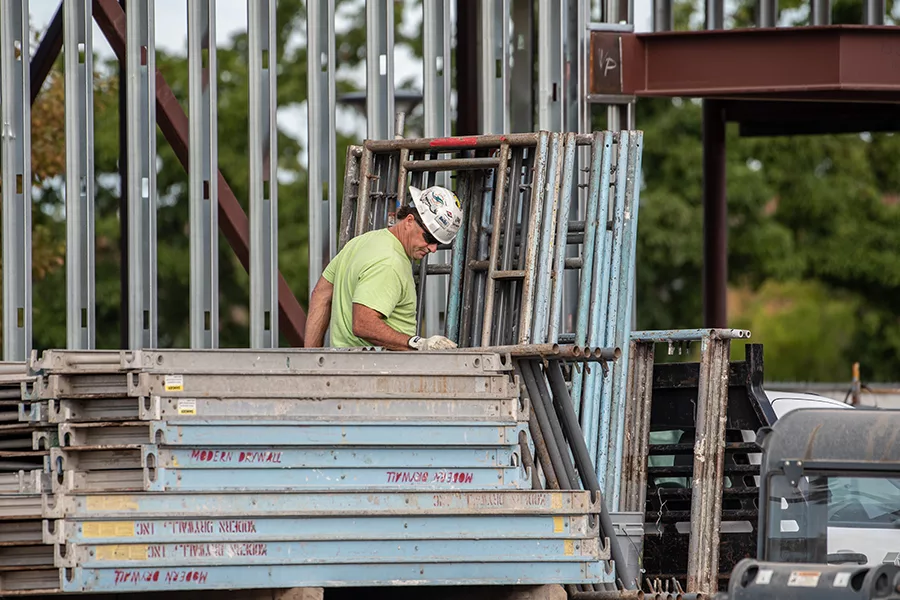
Home » Tri-City construction numbers appear normal, but looks may be deceiving
Tri-City construction numbers appear normal, but looks may be deceiving

May 15, 2020
Homebuilders and homebuyers appear undaunted by the COVID-19 crisis that has sidelined construction and much of the economy since March.
Building permit activity dipped in April, but it is still solid for the year to date, according to new figures released May 7 by the Home Builders Association of Tri-Cities.
Local agencies authorized 437 single-family homes in the first four months of 2020, only eight fewer than the same period in 2019. The value was identical, $131 million in both years.
Buyers bought more homes in March than they did a year earlier, 463 versus 411, according to the Tri-Cities Association of Realtors. The local Realtors reported 1,391 home sales in the first three months of the year, 31 more than the same period in 2019.
Don’t be taken in by reassuring statistics, said Jeff Losey, executive director of the homebuilders association.
Gov. Jay Inslee’s Stay Home, Stay Healthy order shuttered most construction sites and even as the industry reopens, it won’t be the same under the state’s strict new rules.
“The permit numbers are not telling the whole story of what’s going on,” Losey said.
Builders may be pulling permits, but coronavirus measures may preclude them from being built for the time being.
Only projects in motion before the March 23 stay-home order may go ahead as the state reopens construction work in phases. “There’s a lot of permits out there but if they don’t meet the criteria of pre-March 23 you’re not going to be able to go,” Losey said.
Washington, unlike its neighbors, considered most private construction nonessential.
Amid backlash from the industry and pressure from U.S. Reps. Dan Newhouse and Cathy McMorris Rodgers, both Eastern Washington Republicans, the governor relaxed the construction rules.
In the first phase, projects that were started prior to March 23 may resume with strict rules governing workplace safety. Activities that can’t be done while keeping a six-foot distance between workers aren’t allowed. Think shower doors, mirrors, counters and cabinets.
And job sites with seven or more workers must have a dedicated safety supervisor.
Newly authorized construction will be allowed in the second phase, possibly around June 1. The industry hopes that happens earlier.
Regardless, Losey said construction won’t look the same as it did before.
It traditionally takes roughly 90 to 100 days to build a “production” home, which are homes built from a pre-set collection of floor plans in new subdivisions. Custom homes take longer.
Losey said builders want to avoid the cost of an extra supervisor, so they’re keeping crews to six people per work site or less. That means the extra time to build houses could add to the expense.
“It’s going to take longer to build them,” he said. “What I’ve heard most is they’re all trying to coordinate to have fewer people.”
Kennewick reports permitting activity remained consistent during the stay-home closure but its neighbors said it petered out before roaring back amid word work could restart. The city issued 98 permits between January and April, compared to 84 a year ago.
Pasco saw a lull in April, but it proved temporary, said Rick White, the city’s community and economic development director.
Permit staff worked through the weekend after construction restrictions were lifted to get the backlog of approved but unissued permits out the door. They processed about 200 requests over a Saturday and Sunday.
“We’re pretty much back to normal, maybe 80 percent,” White said. Well, almost normal. With city hall closed, the permit staff is using a makeshift walk-up window to help contractors who need assistance in person.
Pasco authorized 141, compared to 166 a year earlier.
In Richland, the end of the restrictions was measured in the request for building inspections.
“The inspection numbers increased dramatically the very next day,” said Kerwin Jensen, director of community development. “We’re not to where we were pre-pandemic, but as far as residential permits and inspections, we are at 75 percent to 80 percent.”
Richland issued 113 single-family permits in the first four months, five fewer than the same period in 2019.
Local News
KEYWORDS may 2020





